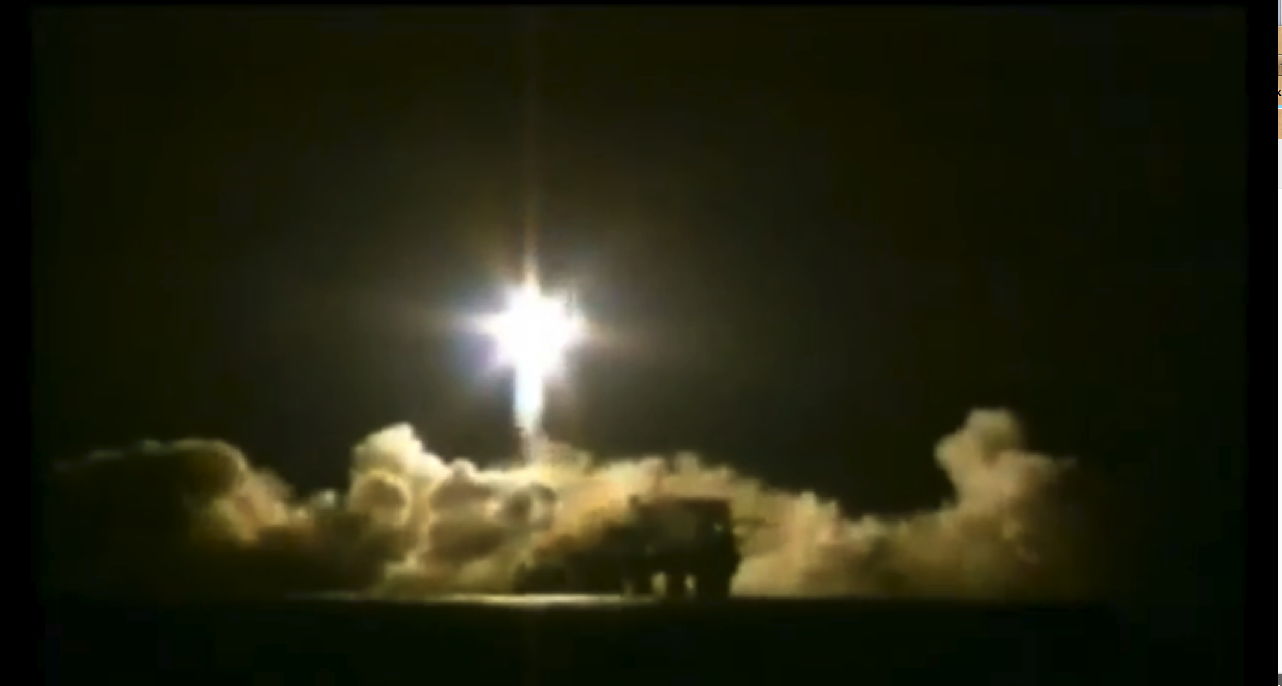Sea Launch Rocket Fails During Liftoff, Satellite Lost

PARIS — A commercial Sea Launch rocket failed 40 seconds after liftoff from its floating launch platform in the Pacific Ocean on Friday (Feb. 1) destroying the Intelsat IS-27 telecommunications satellite and compromising Sea Launch's long road to recovery from its previous failure in January 2007.
Now headquartered in Bern, Switzerland, and owned by an affiliate of Russia's RSC Energia space-hardware manufacturer, Sea Launch AG had emerged from Chapter 11 bankruptcy restructuring in October 2010 – a reorganization that was an indirect consequence of the 2007 failure – and returned to flight in September 2011. Friday's launch failure occured just after the company's Zenit 3SL rocket lifted off from its launch platform at 1:56 a.m. EST (0656 GMT).
With a new lease on life made possible by the backing of the world's largest and third-largest commercial satellite fleet operators, Intelsat of Washington and Luxembourg, and Eutelsat of Paris, respectively, Sea Launch conducted five successful launches through December 2012 – three for Intelsat, two for Eutelsat.
Sea Launch had been preparing a relatively light manifest for 2013 as it replenished its stock of hardware for the Russian- and Ukrainian-built Zenit 3SL rocket it uses for operations. The company had planned to increase its launch rate, starting in 2014, to four commercial campaigns per year. [Amazing Rocket Launches of 2013 (Photos)]
The only customer whose launch may be affected by the Thursday rocket failure is Israel's Spacecom satellite fleet operator, whose Amos 4 telecommunications satellite is scheduled for launch on a Land Launch rocket in July.
Land Launch uses the same Zenit 3 rocket configuration as Sea Launch, but operates from the Baikonur Cosmodrome in Kazakhstan. The launch contract with Spacecom is not with Sea Launch, but with Space International Services (SIS) of Moscow, and is part of a contract signed for the 2008 launch of Spacecom’s Amos 3 satellite.
Intelsat's IS-27, a Boeing Space and Intelligence Systems 702MP model weighing 6,215 kilograms at launch, was to have been operated from 55.5 degrees west longitude, where it would have replaced Intelsat's Galaxy 11 and Intelsat 805 satellites. Intelsat said in a Feb. 1 statement that services from these satellites will continue as usual.
Get the Space.com Newsletter
Breaking space news, the latest updates on rocket launches, skywatching events and more!
But IS-27 was more than a replacement of existing capacity. Its payload included a Ku-band beam over the North Atlantic sea and air routes that would have completed Intelsat’s Global Mobility project, featuring 10 beams on seven satellites allowing uninterrupted coverage for mobile maritime and air customers using Ku-band.
The satellite also carried a beam over the Andean nations and Mexico, and a beam over Brazil.
Intelsat is one of several satellite operators that are using L-, Ku- and Ka-band to develop a mobile satellite services business with maritime and aeronautical customers. Whether the IS-27 loss will affect the contracts Intelsat has signed for mobile satellite services was not immediately known. The company said in its Feb. 1 statement that it is "committed to working with customers to identify the most appropriate solutions for service continuity."
IS-27 also carried a UHF-band payload that Intelsat had hoped to lease to the U.S. Defense Department. But as of the launch date, no customer for this payload, a frequency mainly used by military forces, had made itself known. Intelsat had added a similar payload to the IS-22 satellite, which is already in orbit, and had secured the Australian defense forces as a customer for the life of the satellite.
IS-27 was insured for about $400 million, meaning the world’s space-insurance underwriters are starting 2013 in the red. Satellite insurance rates have been low for the past several years as premiums have far exceeded claims, in part because most of the recent launch failures, until Sea Launch, had been carrying government satellites that did not take out insurance.
The Sea Launch failure is the latest in a series affecting Russian rockets. Russia’s heavy-lift Proton rocket, which through International Launch Services (ILS) of Reston, Va., competes with Sea Launch on the commercial market, in December suffered its third failure in 16 months.
Russia’s small Rockot launcher, which like Proton is built by Khrunichev Space Center of Moscow, successfully launched three Russian military satellites in January but shut down before it could perform a planned de-orbit maneuver.
Failure-review boards are now in place for the Proton and Rockot issues. Sea Launch said it would immediately establish its own board of inquiry.
This story was provided by Space News, dedicated to covering all aspects of the space industry.
Join our Space Forums to keep talking space on the latest missions, night sky and more! And if you have a news tip, correction or comment, let us know at: community@space.com.

Charles Q. Choi is a contributing writer for Space.com and Live Science. He covers all things human origins and astronomy as well as physics, animals and general science topics. Charles has a Master of Arts degree from the University of Missouri-Columbia, School of Journalism and a Bachelor of Arts degree from the University of South Florida. Charles has visited every continent on Earth, drinking rancid yak butter tea in Lhasa, snorkeling with sea lions in the Galapagos and even climbing an iceberg in Antarctica. Visit him at http://www.sciwriter.us










